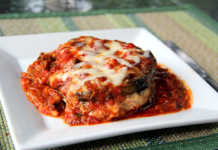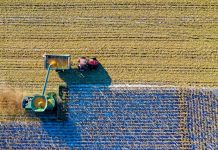Some work can be a pain in the neck, but a number of diverse professions can also be a pain in the leg, according to a leading Australian vein doctor.
Many jobs can worsen the painful condition of varicose veins in people with a family history of venous disease, according to a leading phlebologist (vein doctor), Dr Peter Paraskevas of Vein Health Medical Clinic, part of the Paras Clinic Group.
“The long hours nurses spend on their feet tending the sick could lead to their own health problems by weakening veins in their legs, causing varicose veins – large, bulgy visible veins which protrude through the skin’s surface”, he said.

Other professions where those with varicose veins are at risk because of prolonged periods of standing include hairdressing, traffic control, teaching, retail and hospitality work. While some jobs requiring prolonged sitting also aggravated the condition.
Dr Paraskevas stressed that prolonged standing or sitting in a job was more likely to impact people with a family history of venous disease.
“Those with one parent suffering the disease had a 33 per cent chance of getting varicose veins but when both parents suffered the condition, this increased to 90 per cent”, he said.
Not only are varicose veins unsightly, they are painful and cause aching and heavy legs; tiredness; burning, itching and throbbing legs; night cramps; restless legs; ankle swelling; skin pigmentation; eczema and ulcers.
“Vein disease is progressive so if left untreated, symptoms are likely to become worse and more serious complications such as phlebitis (inflammation of the vein), blood clots, such as deep vein thrombosis; dermatitis and vein ulcers can develop,” he said.

Dr Paraskevas said the latest non-surgical treatments including laser treatments and a Medicare approved vein glue known as VenaSeal, were proving popular with patients wanting to avoid surgery.
“Non-surgical treatments can vary and take as little as 30 minutes allowing most patients to walk in and out and return to their normal lives immediately,” he said.
These treatments avoid the inconvenience of hospital admission, anaesthetic, potential scarring from surgery and have success rates as high has 98%.
Dr Paraskevas said, “When you’re in an occupation that doesn’t allow for much movement for hours at a time, the vein valves in legs could weaken causing varicose veins, if the patient has a family history of venous disease”.
“Varicose veins develop when the one-way stop valves within the veins wear out and stop working, allowing blood to pool within the vein,” he said. “This causes that vein to swell and protrude – once damaged, the vein never returns back tonormal.”
He said sitting and standing for prolonged periods at work both posed problems to leg health. “The most important thing to do is to listen to your body and pay attention to any changes you observe, then have your varicose veins assessed properly by a professional with an ultrasound scan,” he said.
FAST FACTS ON REDUCING THE RISK
1. Keep your legs and veins healthy with regular exercise, particularly walking or jogging including walking 20 minutes during your lunch break, followed by stretching.
2. Maintain a healthy weight to reduce pressure on your legs.
3. When on a work break, elevate your legs for a few minutes.
4. Wear compression stockings to support your veins and help promote normal blood flow.
5. Have your varicose veins assessed and treated by a medical professional.
For more information on varicose veins and the latest treatments visit www.veinhealth.com.au part of the Paras Clinic group.

![5 Reasons You Should Travel Alone Airplane [image source: chau nguyen/ http://thedevilhatessweatpants.blogspot.com.au ], crowd ink, crowdink, crowdink.com, crowdink.com.au](https://crowdink.com/wp-content/uploads/2016/08/Chau-airplane-218x150.jpg)




























![5 Reasons You Should Travel Alone Airplane [image source: chau nguyen/ http://thedevilhatessweatpants.blogspot.com.au ], crowd ink, crowdink, crowdink.com, crowdink.com.au](https://crowdink.com/wp-content/uploads/2016/08/Chau-airplane-100x70.jpg)


